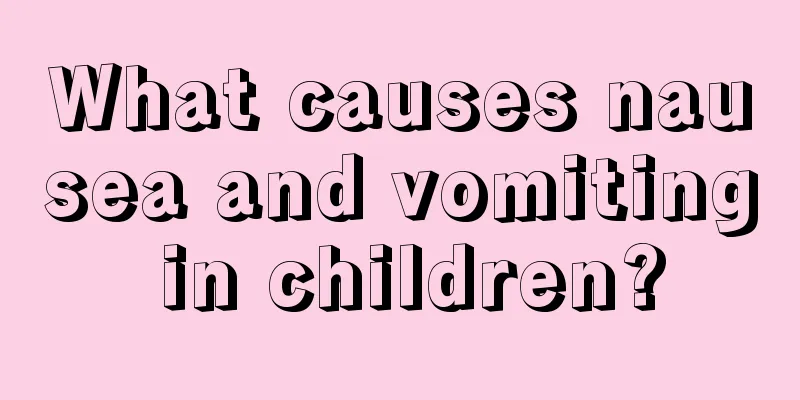What are the symptoms of trace element deficiency in children?

|
As we all know, human life activities require the participation of a variety of trace elements, such as the well-known calcium, phosphorus, iron, potassium, etc. In fact, the human body needs many trace elements. Although the amount of these trace elements in the human body is relatively small, they are indispensable, so it is necessary to supplement these necessary trace elements through diet. So if children lack trace elements, what symptoms are most likely to appear? What are the symptoms of trace element deficiency in children? Although the content of trace elements in the baby's body is not high, their role is not small. If the baby lacks certain trace elements, then parents can see it through careful observation. Let's take a look at the symptoms of trace element deficiency in the baby's body! 1. Zinc deficiency: anorexia, slow growth and development. Symptoms: Decreased appetite is one of the early manifestations of zinc deficiency in infants and young children. Children who are zinc deficient have a decreased sense of taste and cannot distinguish between sour, sweet, bitter and salty. They have delayed growth and development, are short and do not gain weight. They have poor resistance and suffer from repeated colds or diarrhea. They are prone to recurrent oral ulcers. Zinc deficiency can also damage children's taste buds and cause anorexia. Foods rich in the trace element zinc: oysters, pecans, scallops, button mushrooms, shiitake mushrooms, lamb, sunflower seeds, pork liver, beef liver, etc. 2. Iron deficiency: anemia and decreased concentration. Symptoms: Iron deficiency anemia has a very serious impact on the health of women of childbearing age and children. Severe iron deficiency anemia can increase the mortality rate of children and mothers. Iron deficiency can damage children's intellectual development, make infants and young children irritable and indifferent, and lack interest in the things around them. It can also cause abnormalities in attention, learning ability, and memory in children and adolescents. The incidence of lead poisoning in young children with iron deficiency is 3-4 times higher than that in children without iron deficiency. Foods rich in iron: Animal foods such as liver, blood and lean meat; beans, green leafy vegetables, brown sugar, eggs. The iron absorption rate of human milk is as high as 70%. 3. Calcium deficiency: poor development. Symptoms: Calcium is one of the nutrients most likely to be deficient in children's diet. Rapidly growing infants and young children who have long-term low calcium intake, vitamin D deficiency, and insufficient sunlight exposure may suffer from growth retardation, skeletal deformities, and poor dental development. Foods rich in trace element calcium: milk, cheese, eggs, soy products, kelp, seaweed, dried shrimps, sesame, hawthorn, sea fish, vegetables, etc. 4. Iodine deficiency: mental retardation. Symptoms: Iodine deficiency can lead to reduced secretion of thyroid hormones. Children may experience physical retardation, mental retardation, and in severe cases, may become dull and stupid. Foods rich in the trace element iodine: dried kelp, marine fish, seaweed, lean meat, poultry, and dairy products. Supplementing children with trace elements has attracted much attention from parents. During the infant and toddler stage, babies are most likely to lack two trace elements, iron and calcium. Parents must pay attention. Iron--Iron is one of the raw materials for blood production. The iron obtained from the mother after birth is stored in the body and can meet the needs of 3 to 4 months after birth. If iron-rich foods are not supplemented in time after 4 months, nutritional iron deficiency anemia will occur. Fish, meat, pork liver, and animal blood contain high levels of iron and have a high absorption rate. The iron content in soybeans is also not low. Vitamin C can promote iron absorption, so babies should be given appropriate iron supplements. Calcium--Calcium is an important component of bones. Currently, there is a general lack of calcium in the diet of adults. Children are in the growth and development stage and require more calcium than adults. Although the calcium content in breast milk is low, the ratio of calcium to phosphorus is appropriate and the absorption rate is high; although the calcium content in cow's milk is higher than breast milk, the high phosphorus affects calcium absorption. The absorption of calcium depends on the action of vitamin D. When vitamin D is deficient, the absorption of calcium is reduced. The main function of vitamin D is to promote the absorption of calcium in the intestine to increase the level of calcium in plasma and promote bone calcification. It can promote calcium transport in intestinal cells and change the permeability of intestinal cell mucosa, making calcium more easily and quickly absorbed into the blood. In addition, in the kidneys, vitamin D can promote the reabsorption of calcium by the renal tubules, thereby reducing the loss of calcium in the urine. After a newborn is one month old, he or she should go outdoors to get some sun exposure and be given vitamin AD preparations, which contain 400-800 international units of vitamin D per day. He or she can also take compound calcium carbonate effervescent granules to prevent rickets. |
<<: What are the symptoms of rhinitis in a three-year-old baby?
>>: What are the symptoms of mild encephalitis in children?
Recommend
What should children eat to eliminate lead?
Lead is a metal substance. For children, excessiv...
Why does a newborn baby have loose and foamy stools?
When children are young, their resistance in all ...
Fetal cord blood test
In order to promote eugenics and good parenting, ...
Symptoms of cerebral palsy in five-month-old babies
Many children are born with mental retardation, w...
What should I do if my baby falls asleep easily while feeding?
I believe that many parents have encountered such...
Why does a child develop one breast, one larger than the other?
When girls enter puberty, their bodies begin to d...
What to do if a child has a persistent fever
Fever is generally a common disease in children. ...
Can children eat bananas when they have a cough?
Since children have relatively low immunity, they...
How to educate a two-year-old baby?
When the baby is about two years old, he or she c...
Causes of baby's forehead protrusion
It is not easy for many parents to notice that th...
Causes of neonatal death
Not all babies can be born safely. Many babies su...
How to solve the problem of children's hair becoming yellower and yellower
The problem of children's hair becoming incre...
Nursing after circumcision of children
Phimosis is a disease that is currently more seri...
How to correct a child's hunchback?
The problem of hunchback will greatly damage our ...
Why does the baby have difficulty breathing when sleeping?
Babies have relatively weak resistance, and some ...









